
X-Men vs. Street Fighter is a crossover fighting video game developed and published by Capcom. It is Capcom's third fighting game to feature Marvel Comics characters, following X-Men: Children of the Atom and Marvel Super Heroes, and is the first installment in the Marvel vs. Capcom series. As the title suggests, the game includes characters from Marvel's X-Men franchise and the cast from Capcom's Street Fighter series. Originally released as a coin-operated arcade game in 1996, it was ported to the Sega Saturn in 1997 and the PlayStation in 1998. The original arcade version is included in the game lineup for Marvel vs. Capcom Fighting Collection: Arcade Classics, released for the Nintendo Switch, PlayStation 4 and Windows in 2024.
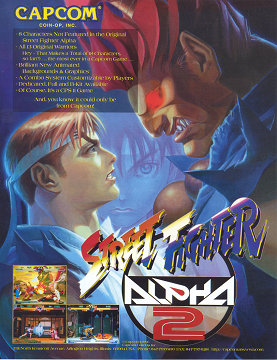
Street Fighter Alpha 2, known as Street Fighter Zero 2 in Japan, Asia, South America, and Oceania, is a 1996 fighting game originally released for the CPS II arcade hardware by Capcom. The game is a remake of the previous year's Street Fighter Alpha: Warriors' Dreams. The game features a number of improvements over the original, such as new attacks, stages, endings, and gameplay features. It was followed by Street Fighter Alpha 3.

Mortal Kombat Trilogy is a fighting game released by Midway in 1996 as the second and final update to Mortal Kombat 3 for the PlayStation, Nintendo 64, Sega Saturn and PCs. Further versions were also released for the Game.com and R-Zone. It features a similar basic gameplay system and the same story as Ultimate Mortal Kombat 3, but adds characters and stages restored from Mortal Kombat and Mortal Kombat II. New additions to the game included the "Aggressor" bar. The Brutality mechanic was introduced with this installment. The game was met with positive to mixed reviews upon release.

Marvel Super Heroes is a 1995 fighting game developed and published by Capcom. Originally released in the arcade on the CPS-2 arcade system, it was ported to the Sega Saturn and PlayStation in late 1997. The game, alongside Marvel vs. Capcom: Clash of Super Heroes, was also included in the Marvel vs. Capcom Origins collection, released digitally for the PlayStation 3 and Xbox 360 in September 2012.
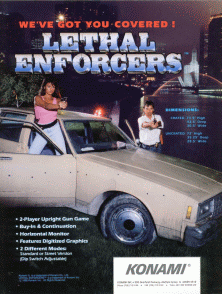
Lethal Enforcers is a 1992 light gun shooter released as an arcade video game by Konami. The graphics consist entirely of digitized photographs and digitized sprites. Home versions were released for the Super NES, Genesis and Sega CD during the following year and include a revolver-shaped light gun known as The Justifier.

Saturn Bomberman is an action video game by Hudson Soft for the Sega Saturn as the name implies. The twelfth installment in the Bomberman series, it was first released in Japan on July 19, 1996, in Europe in May 1, 1997, and in North America in September 4, 1997. It is best known for its multiplayer functionality for up to ten players. The game received praise from critics for its enjoyable gameplay and multiplayer, but received criticism for not advancing the Bomberman series enough beyond previous installments.

Rampage World Tour is an arcade video game released by Midway Games in 1997 as the sequel to Rampage. It was developed at Game Refuge by Brian Colin and Jeff Nauman, who designed the 1986 original. Ports were released for the Sega Saturn, Nintendo 64, Game Boy Color, PlayStation, and Microsoft Windows. It was re-released on Midway Arcade Treasures 2 and included in Rampage: Total Destruction.
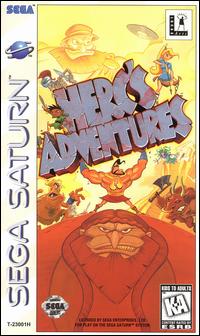
Herc's Adventures is a video game released for the Sega Saturn and PlayStation by LucasArts in 1997. The overhead, action-adventure format is similar to Zombies Ate My Neighbors. Up to two players each take on the role of one of three ancient Greek heroes: Herc (Hercules), Atlanta (Atalanta), or Jason, who are on a quest to defeat Hades and save the goddess of nature, Persephone. In 2014, it was released for PSN in North America.
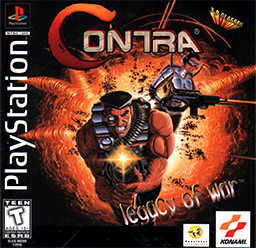
Contra: Legacy of War is a 3D action game produced by Konami and developed by Appaloosa Interactive that was originally released in 1996 for the PlayStation and Sega Saturn. It is a follow-up to Contra: Hard Corps, and was the first of two games in the Contra series that were externally developed by Appaloosa; the second game, C: The Contra Adventure, was released in 1998. Legacy of War marks the series' shift to three-dimensional graphics and gameplay, the game was released packaged with a pair of 3D anaglyph glasses, which enables the player to view the 3D effects incorporated into the game's graphics. Legacy of War bears the distinction for being the first console game in the series to retain both the Contra title and human characters during its release in Europe and Australia. The game was scheduled to be released in Japan as well, but was cancelled.
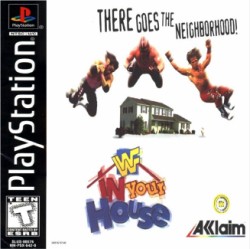
WWF In Your House is a video game for the PlayStation, Sega Saturn, and DOS. Developed by Sculptured Software, it is a follow-up to WWF WrestleMania: The Arcade Game and was published by Acclaim Entertainment, who had previously released WrestleMania for home consoles.

Black Dawn is a helicopter-combat simulation, published by Virgin Interactive Entertainment. It was released on the Sony PlayStation and the Sega Saturn in 1996.
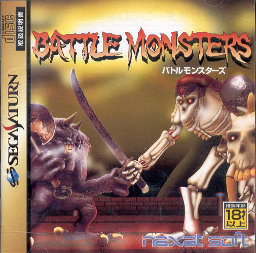
Battle Monsters (バトルモンスターズ) is a versus fighting game developed by Scarab for the Sega Saturn. It was originally published by Naxat Soft in Japan and later published in North America and Europe by Acclaim Entertainment. Similar to Atari's Pit-Fighter, the game makes heavy use of digitized human actors as the characters, plus some blood influenced by Midway's Mortal Kombat series. The game features 12 playable fighters, and plays out on multi-tiered stages.
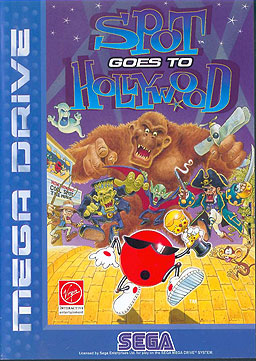
Spot Goes to Hollywood is a platform game developed by Eurocom and published by Acclaim Entertainment in North America and Virgin Interactive Entertainment in Europe for the Mega Drive/Genesis as the sequel to Cool Spot. Saturn and PlayStation versions were later released with full-motion video clips and isometric graphics. The player controls Spot, the mascot of the 7 Up soft drink, as he travels to various places trying to free his friends.

NBA Hangtime is a 1996 basketball arcade game developed and released by Midway. Home versions were released for the Nintendo 64, PlayStation, Super NES, Sega Genesis, and Microsoft Windows.

Maximum Force is a light gun shooter arcade game developed by Mesa Logic for Atari Games in 1997. In 1998, Atari Games re-released the game as part of one machine called Area 51/Maximum Force Duo that also included Area 51, and later ported the game to both the Sony PlayStation and Sega Saturn game consoles.

Loaded is a science fiction-themed top-down multidirectional shooter developed by Gremlin Interactive. Loaded was released on December 15, 1995 on the PlayStation, and was ported to the Sega Saturn the following year. The game had origins in DC Comics as well as the more adult-orientated Vertigo Comics, and there was a small graphic novel based on the game. The six playable characters of the game are a combination of villains, anti-heroes, psychopaths, perverts, mutants, and flamboyant murderers. They are, however, the best hope to stop the intergalactic supervillain nicknamed F.U.B. and save the universe. The characters were created and designed with contributions from Garth Ennis of Vertigo Comics and Greg Staples of 2000AD.

Street Fighter Collection is a 1997 fighting game compilation developed and published by Capcom for the Sega Saturn and PlayStation. It contains the original Super Street Fighter II: The New Challengers (1993), its follow-up Super Street Fighter II Turbo (1994), and an enhanced version of Street Fighter Alpha 2 titled Street Fighter Alpha 2 Gold, which is exclusive to this compilation.

Iron & Blood: Warriors of Ravenloft is a 3D fighting game released for PC and PlayStation.
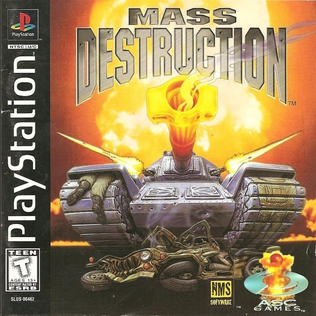
Mass Destruction is a 1997 third-person action game developed by NMS Software and published by ASC Games and BMG Interactive. Released for MS-DOS, the Sega Saturn, and the PlayStation, the game puts players in control of a tank, and tasks them with destroying enemy forces. It has often been likened to Return Fire.


















